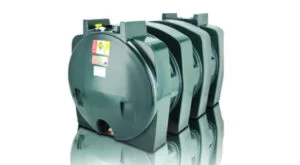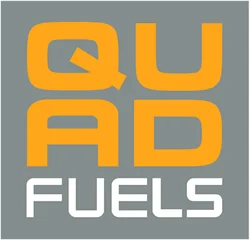
If you find yourself moving to a property that relies on heating oil, understanding the intricacies of the oil tank becomes paramount. Our complete guide aims to provide valuable insights into the types of oil tanks, the importance of proper positioning, and the maintenance required to ensure optimal functionality and safety.
The Types of Oil Tank
Oil tanks typically have a lifespan of around 20 years, and there are two primary types of above-ground oil tanks – single-skinned and bunded.
- Single-skinned oil tanks
Constructed from a single layer of steel or plastic, these tanks offer a lower level of protection against leaks and damage. However, current building regulations and oil storage guidelines often prohibit their use, especially where a bunded tank is required. Failing to adhere to these regulations is a serious offence. - Bunded oil tanks
Considered the safer option, bunded tanks feature a tank within a tank design. The outer tank has the capacity to hold 110% of the inner tank’s contents, including all fittings. When replacing older tanks, it is advisable to opt for bunded tanks, installed by professionals in compliance with regulations. Additionally, the removal of the old tank, along with redundant fill pipework, is crucial for safety and compliance.
The Positioning of your Oil Tank
When positioning your oil tank at your property you will want to check the following:
- Adherence to Building Regulations
Ensure that your tank placement adheres to local building regulations. In many regions, bunding is mandatory to reduce pollution risks from fuel spills.
- Distance from Openings
Maintain a minimum distance of 1.8 metres from any openings in the building to mitigate potential safety risks.
- Base Requirements
Place the tank on a base that extends 300mm beyond the tank in every direction. This base should be atop a minimum 100mm thick concrete slab or 50mm thick paving slabs.
- Space for Maintenance and Refilling
Allow sufficient space around the tank to facilitate regular maintenance checks and for distributors to safely refill the tank.
Maintaining Your Oil Tank
- Visual Checks
Conduct visual checks every six months, looking for signs of rust, cracks, splits, bulging, sun bleaching, subsidence on the tank base, correct gauge functionality, overgrown foliage, and any unusual smell emanating from the oil.
- Annual Servicing
Schedule an annual service by an OFTEC registered technician. This professional should check the pipework, integral bund, gauges, valves, and oil filters for proper functionality.
- Leak Response
If you identify a leak, place a container to catch the spillage immediately and contact the national pollution incident hotline for prompt assistance.
In conclusion, understanding and maintaining your oil tank is essential for a seamless heating experience in your new home. Adhering to regulations, choosing the right tank type, proper positioning, and regular maintenance contribute to the longevity, safety, and efficiency of your heating oil system. Make this comprehensive guide your go-to resource for a reliable and hassle-free heating experience throughout the year.
If you spot a leak on your oil tank, put out a container to catch the spillage and call the national pollution incident hotline on 0800 80 70 60 (England, Scotland, & Northern Ireland) and 0300 065 3000 (Wales).


